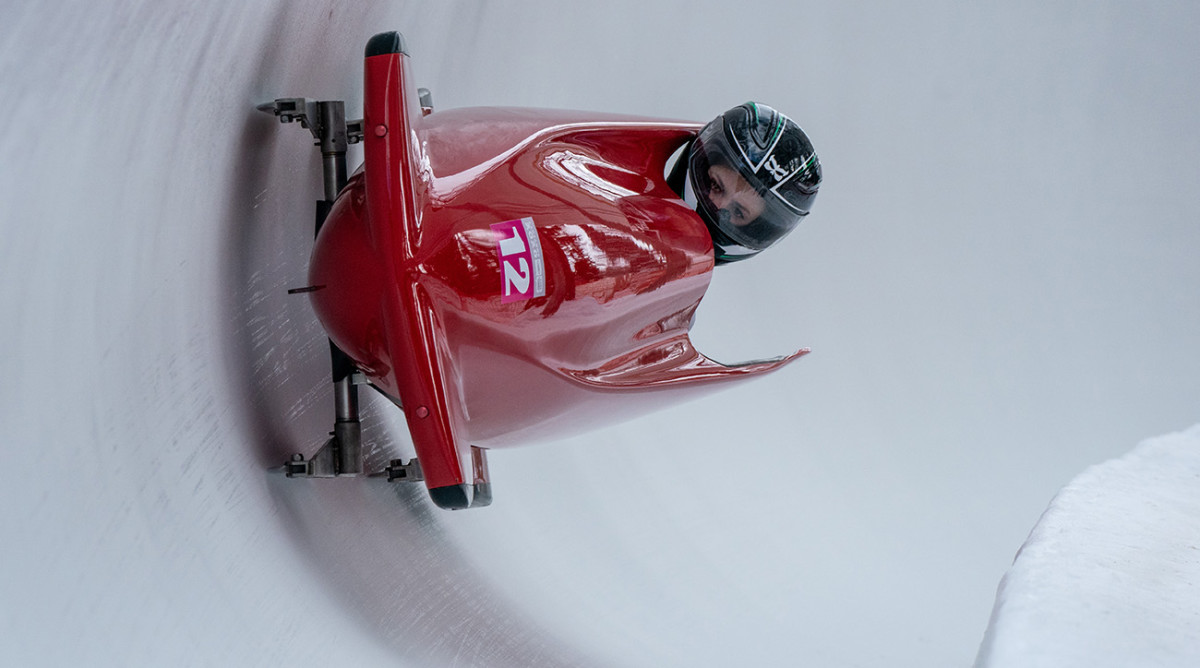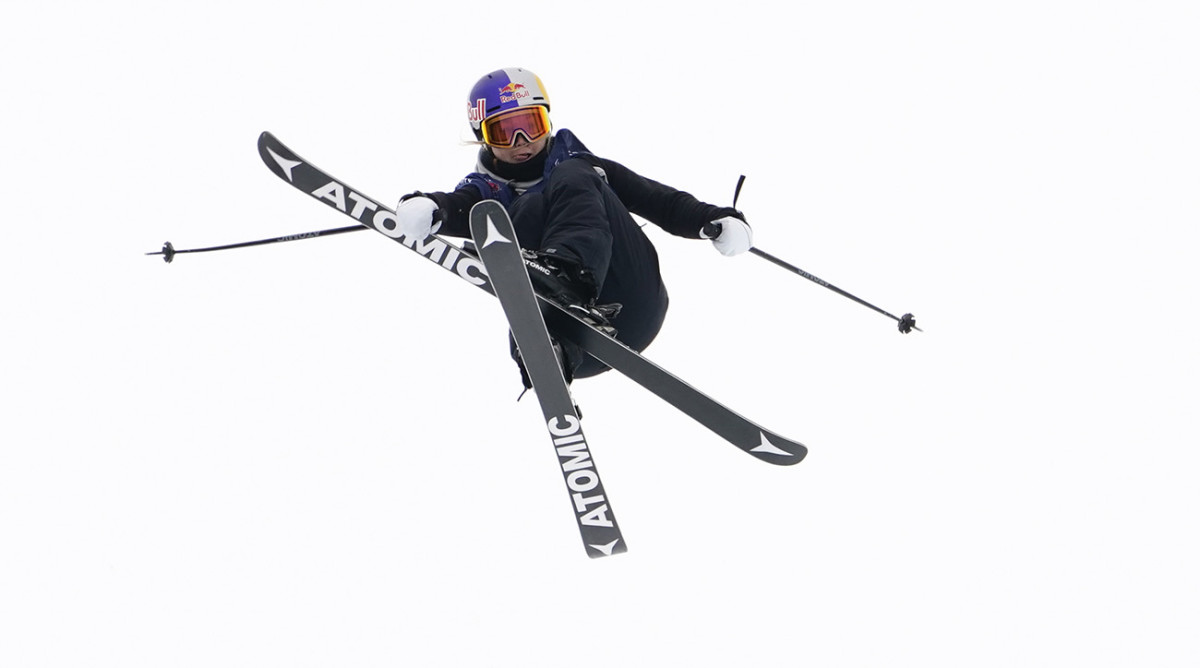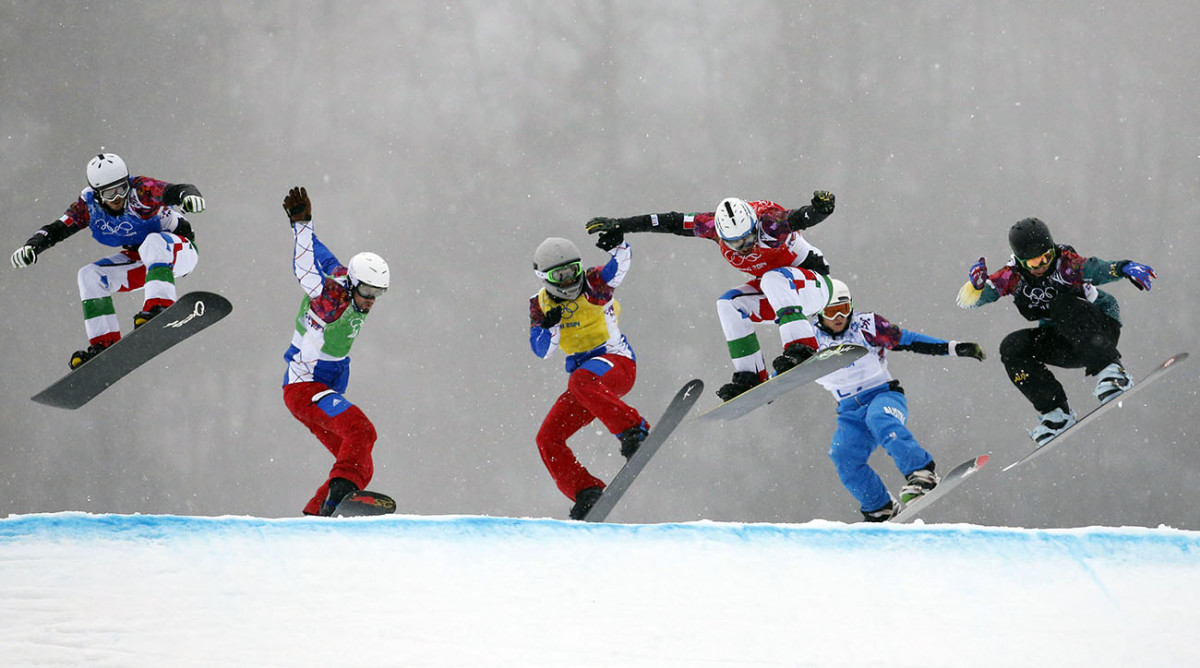These Seven Events Will Make Their Olympic Debut in Beijing
The first Winter Olympics, held in Chamonix, France, in 1924, had just 16 events—a far cry from the 109 gold medals that will be handed out this year in Beijing. Seven of those will be awarded in events making their Olympic debut.
Learn more about the additions before the Games get underway.
Women’s monobob

Since the inaugural Chamonix Games, bobsled has been a technological arms race. Federations are always searching for a leg up in aerodynamic engineering, seeking to optimize the vehicles for their respective athletes.
Monobob, however, requires all competitors to use identical sled models, shifting the emphasis from technology to athletic skill. The new discipline is also more affordable for smaller nations. According to The New York Times, monobobs cost less than a quarter of the price of their two-person counterparts, paving the way for more Cool Runnings–style underdogs.
The solo event, which made the program for the 2016 Winter Youth Olympics in Norway, will be a women’s-only event to level the number of men’s and women’s bobsled events. Men have competed in two- and four-person sleds since the 1932 Olympics. Women didn’t compete in two-person sleds until 2002 and do not have a four-person competition.
Germany’s Laura Nolte won the youth event six years ago, but at the first World Cup race of the season in Innsbruck, Austria, she settled for bronze behind two Americans: Elana Meyers Taylor and Kaillie Humphries. All three are contenders for gold in Beijing.
Short-track speedskating mixed relay
After featuring at the short-track speedskating World Cup every season since 2018–19, the mixed relay will finally receive an Olympic showcase in ’22.
Up to 12 teams, consisting of two men and two women each, skate a total distance of 2,000 meters (or 18 laps). Each skater appears twice in the relay.
Races, which usually finish in just over two and a half minutes, can be unpredictable. Unlike in track relays, skaters tag their teammates rather than pass batons, so proper tagging technique can be just as important as skating speed.
Team USA, which missed the semifinals at three of four World Cup Series events this season, remains a long shot to make the podium. China, which holds the world record and the top spot in the latest world ranking, will be favored to take gold on home ice, but the Netherlands and Hungary pose formidable threats. The Dutch team narrowly edged out the Hungarians to win the latest World Cup stage by 0.035 seconds.
Ski jumping mixed team event
Ski jumping has featured in every Winter Olympics since the first in 1924, but women did not compete on this stage for another 90 years. Eight years later, a mixed team event joins the program for the first time.
The mixed team event uses similar rules to the men’s large hill team competition, which was first seen on the world’s biggest stage at the 1988 Games in Calgary. One notable difference: The mixed event takes place on the smaller normal hill.
Each team features two men and two women. After two rounds of jumps, the team with the highest combined total of all eight jumps will take the top spot on the podium. Ski jumping powerhouse Germany has claimed the last four mixed team events at the World Ski Championships, but Norway, Austria and Japan should also be in the mix at the Kuyangshu Ski Jumping Field in Zhangjiakou, 100 miles northwest of Beijing,
Twelve countries have qualified for the event; the United States is not among them. No American has won a ski jumping medal since Anders Haugen took individual bronze in 1924.
Men’s and women’s freestyle skiing big air

The men’s and women’s events in big air account for two of the seven debut events at the 2022 Olympics.
A young sport dominated by younger competitors, freestyle skiers are constantly pushing their limits in big air. Austria’s Matěj Švancer recently landed a nosebutter triple cork 1980 safety, which marked the first time anyone had landed that trick. With that, the 17-year-old earned a 98.00 (out of a possible 100) and his second consecutive men’s World Cup series event victory.
The Olympic introduction of freeski big air comes in large part due to the success of snowboarding big air in its 2018 debut.
Judges assess jumps based on the acronym DEAL—scoring based on difficulty, execution, amplitude and landing. So even if a trick is the most impressive in a vacuum, a successful attempt may still lose to an easier maneuver if it is performed sloppily. A scoring panel consists of six judges; the four middle scores from the judges are averaged to determine the final score of a run.
Alex Hall finished as the runner-up to Švancer at December’s World Cup series event in Colorado. The American also sits second in circuit points to Švancer, and both should compete for gold.
In the women’s standings, France’s Tess Ledeux holds the lead over Switzerland’s Sarah Hoefflin. They finished in first and second, respectively, at October’s big air competition in Hoefflin’s home country.
Freestyle skiing mixed team aerials
All other mixed events at the Winter Olympics have a set gender ratio, usually a 50-50 split between men and women athletes. But in mixed team aerials, teams compete in trios; each team must feature at least one man and one woman, but third skier can be either a man or a woman.
Women skiers tend to complete their tricks with more consistency, so opting for two women can bring stability in an event in which a single mistake is often enough to take a team out of medal contention. The tricks performed by men’s skiers offer greater risk but potentially a greater reward.
All three athletes, who earn points based on degree of difficulty and jump elements such as air technique and landing, have their scores added up for a combined tally. The highest-scoring team wins.
On the podium at last year’s World Championships in Almaty, Kazakhstan, were the Russian Federation, Switzerland and the United States. But don’t count out the hosts at this year’s Olympics. China has 11 medals to its name in freestyle skiing, all in aerials.
Snowboard cross mixed team event

Snowboard cross, also referred to as boardercross, was initially conceived as a segment for the Fox TV show Greg Stump's World of Extremes in 1991. The event snowballed from there: It featured in the original Winter X Games in 1997, debuted at the Olympics in 2006 and inspired video games such as EA Sports’ SSX and SEGA’s Sonic Riders.
Like the men’s and women’s events, the mixed team event starts with four competitors racing alongside each other on a course that contains banked turns, jumps, drops and more. Collisions aren’t uncommon, although intentional contact is disallowed. The course, usually just over one kilometer, is engineered to reward a combination of speed and control.
In the mixed team discipline, each team features one man and one woman. The men race first, then their relative finish times transfer to their teammates. The women start their race in a staggered format based on those times.
Individual snowboard cross has been dominated by a few athletes for several years. On the men’s side, France’s Pierre Vaultier won back-to-back golds in Sochi in 2014 and Pyeongchang in ’18 before retiring in ’20. Eva Samková of the Czech Republic stood atop the women’s podium in Sochi, won bronze in PyeongChang and won at the FIS Freestyle Ski and Snowboarding World Championships the next year. She also captured first at a November test event at the Olympic venue, the Genting Secret Garden Ski Resort. The mixed team event, though, has not been dominated by any one pairing.
Any nation that has already qualified at least one man and one woman in snowboard cross is eligible. Canada, France, Italy and the United States each will have two pairs compete in the mixed team event, and eight other countries will have one pair each.
More Olympics Coverage:
• Erin Jackson Is Ready to Make a Statement on Ice
• Mikaela Shiffrin Is Focused on the Process
• Abby Roque Is Poised to Make History in Beijing
• Jessie Diggins Is on a Quest For More Than Medals
